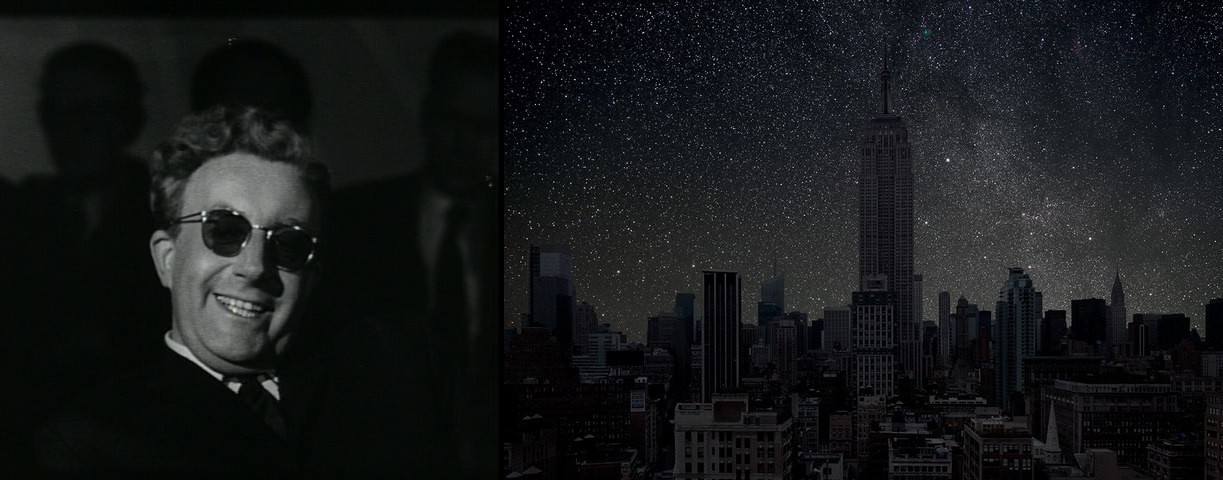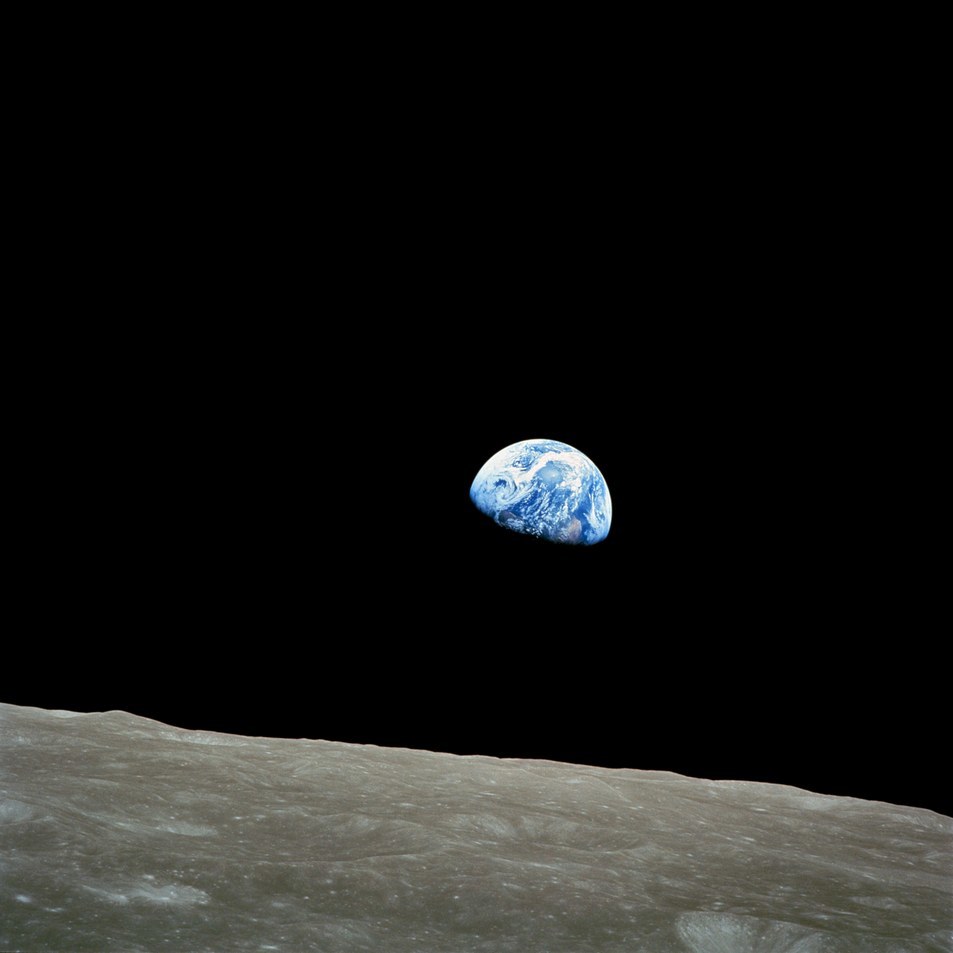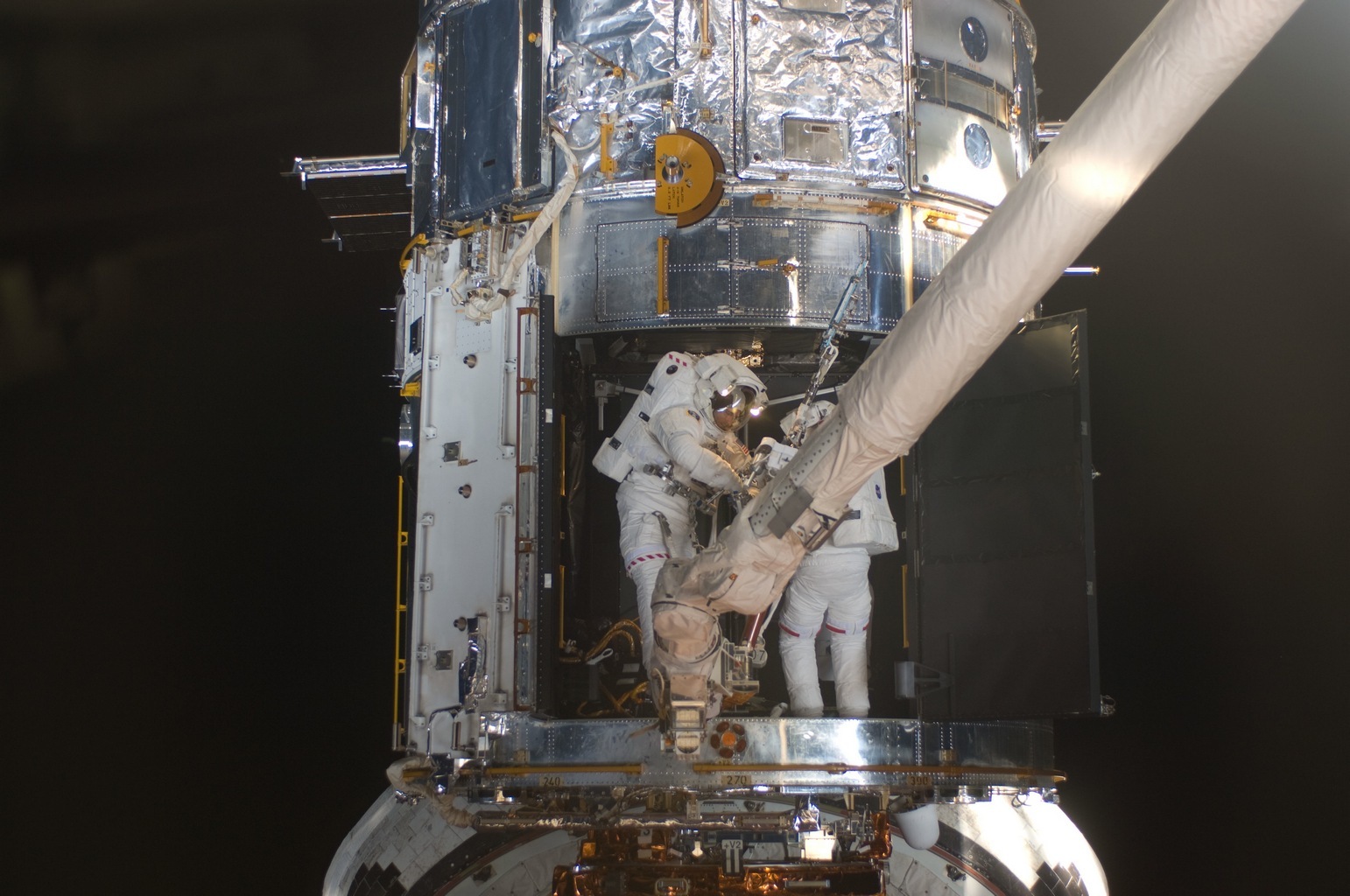How to stop being afraid of night darkness and love the universe

On the right is what the Empire State Building would have looked like if all the city lights had been turned off ( Darkened cities project by photographer Thierry Cohen)
Many people, looking at the night sky of big cities, see on it a couple of dozen stars, which gives the impression complete detachment and emptiness of space. In fact, this is far from being the case - just hanging in the air, together with the illumination from city lighting, creates such a strong background that the stars simply drown in the abundance of this light.
The human eye, being in the center of a large city, receives too much light evenly scattered throughout the celestial sphere, and for this reason cannot go into a state called "night vision" - when the sensitivity of the eyes increases significantly. Because of this, although it seems that it is much darker around - in fact, the total amount of light coming from the entire celestial sphere even increases:

A comparative photo of the night sky of a small city (above), and a large one (below): in the upper photo, it’s good distinguish the Milky Way: in the bottom photo, only a couple are clearly distinguishable, another couple dozen are at the limit of visibility, while our galaxy is no longer distinguishable.
Most of the Earth's settlements are exposed to exposure: Photograph of the night Earth from the satellite Suomi NPP,

link to the original in higher resolution , and a video description of it from NASA:
In this photo you can clearly determine the positions of cities such as Moscow and St. Petersburg, Paris and London - all the major cities create such a strong exposure that they deprive us of any opportunity to see the real beauty of the starry sky: La Silla Observatory (2400 meters above sea level) How much beauty eludes our far from perfect eyes can be imagined from three specially arranged photographs taken by the Hubble telescope. To shoot this photo, a zone was chosen in which there were no objects close to us - both dust clouds and stars, it was a very small section of the sky measuring 3 arcminutes (13 millionth of the sky): The area of the Hubble eXtreme photo taken Deep Field Compared to the Moon


Another excellent example of how tiny this area is: the angular size of the Earth, when viewed from the Moon, is about 2 ° - with one eye closed, a thumb on an outstretched arm to “eclipse” the Earth: The first photograph of the “rising Earth” taken by the Apollo crew 8 December 24, 1968 Zoom showing the area of shooting:

These photos got their own names - Hubble Deep Field , Hubble extreme deep field and the last, joint work of NASA and ESA space agencies - Hubble Ultra-Deep Field (ultra-deep portion of the Hubble telescope), which was released on June 3, 2014: Link to the original

In this photo, objects with an age of 13 billion years are visible, it contains about 10,000 galaxies in total, each galaxy has an average of a billion stars, and each of them has its own history, which is millions and billions of years long. The red dots in this photo — for the most part, are the same galaxies as the front ones — they just are so far away and so quickly removed from us that the light coming from them has to lose a significant part of its energy, while the colors become more and more “red "- as red photons have minimal energy (from visible).
The total exposure of this composite photograph is 11.3 days with an average exposure of each part of the photograph in 20 minutes. And in total, it took 79 days to shoot the telescope. The photo contains 38.44 megapixels, which is approximately 4 thousand pixels per galaxy, and one pixel per 26 thousand stars.
This shooting area is not special, there are thousands of galaxies in any such area, the reason why this particular area of the sky was chosen is the absence of any interference on it, like the stars of our own galaxy, and clouds of dust and gas in the path of light that would interfere with the observations.

Space Shuttle Emblems Associated with Hubble
But everything has its own price - and these beautiful photos, too: the Hubble telescope proved to be very expensive to maintain (mainly due to problems with the main mirror), for the Hubble service they flew as many as five times - actually for no another device the ability of the Shuttles to be used for repairs in space - was not used.

The last Hubble maintenance operation (STS-125): in the foreground you can see the Canadarm manipulator, which was used for docking and as a kind of “transport” for astronauts, below you can see the back of the Shuttle itself.
He continues to delight us with your photos, and other than a couple of sections on the site NASA's , recently obzavolsya and a pair of his own: hubblesite.org and spacetelescope.org. Since the last, fifth “TO”, the telescope has been working for 6.5 years, and over that time it has driven almost 1.5 billion km in orbit. Further expeditions to repair it are not supposed - the Shuttles, with the help of which they were carried out, got into eternal parking in various museums. It is assumed that the telescope will be able to work until the 2030s, forcing the conclusion of its successor - the James Webb telescope at the end of 2018 (which, despite the cost increase several times gained the right to exist from part and thanks to its eminent predecessor).
The film dedicated to the 25th anniversary of the Hubble Space Telescope
Looking at the sky the next time at night - do not forget that its emptiness is only apparent, and a telescope flies somewhere 550 kilometers above the Earth, allowing us all not to forget about it.
